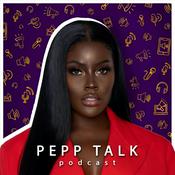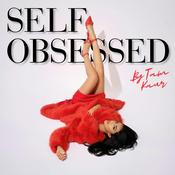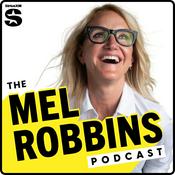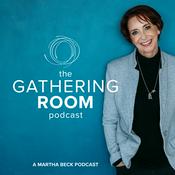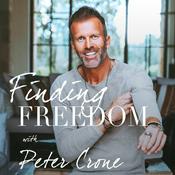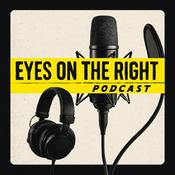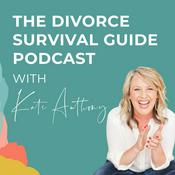651 episodes
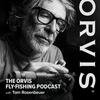
Backcast: All About Bamboo Fly Rods, with Shawn Brillon
2025/12/15 | 1h 41 mins.
This episode was originally published on August 19th, 2022. Want to know how a bamboo fly rod is made? How long it takes to make one? How many different hands touch an Orvis bamboo fly rod before you (and your children and grandchildren) become its lucky owner. And finally, what's so great about bamboo fly rods? How are they different from fiberglass and graphite, and what will they do for you on the water? This week I interview Orvis bamboo fly rod craftsman Shawn Brillon [45:09], who loves to talk bamboo rods as much as he enjoys making and fishing them. In the Fly Box this week, we have some great questions and tips from listeners, including: I could catch rising trout in one part of a pool, but when I moved 50 meters upstream I couldn't catch any. What was going on? How do I determine the correct size leader if I am going from a single size 16 fly to a hopper or multiple nymph rig? What are your thoughts on weed guards on flies? I caught a dragonfly on my elk hair caddis. Am I the first? I hooked a trout in the corner of the mouth and even with a barbless hook it bled and looked like it would die. Would it have been better if I left the fly in the fish? I have been fishing with an 8-weight shooting head outfit for striped bass and halibut. I want to catch corbina but I hear they are spooky. Do you think my 8-weight is too heavy? I keep seeing these large fish rising in a heavily pressured river but can't catch them on any multi-fly rig. What can I do to fool these fish? What do you do to stay in shape for fishing? What are the advantages of a big dry fly over a bobber? Does bead size really matter regarding attractiveness to trout? And is there a seasonality to what color beads you should use? I have been catching catfish on a fly. Does anyone else do this and is it a "thing" or is it bycatch? I went to Banff to fish and they required that all my tackle, including lines and leaders, could not have been used for 45 days and had to be cleaned and treated. What do you think about the potential for things like lines and leaders to transfer invasive species?

Backcast: Fly Fishing from Canoes and Kayaks, with Ryan Lilly of Old Town Canoe
2025/12/08 | 1h 39 mins.
This episode was originally published on March 10th, 2023. Learn how to decide between a canoe and a kayak, what kind to get, and how to maneuver and cast using these hard-sided watercraft (next week I'll be doing a podcast on inflatables). Ryan Lilly [47:30] is a fly fisher and Old Town's expert on fishing from these craft, and has many great suggestions for how to make the most out of your canoe or kayak experience. In the Fly Box this week, we have some interesting questions that I'm sure will be of interest to many of you, as well as some thoughtful tips from other listeners, including: What do bead-head nymphs imitate? Aren't flies tied without beads more natural in the water? Isn't it more natural to use a nymph without any added weight? How do you fish wet flies? Do you use a single one or more than one? And do you ever use weighted wet flies? I recently saw a bunch of large carp in a pond in Florida. Why didn't I see any smaller ones? I had trouble getting a good drift against the slow water on the far bank of a river. Every time I tried to mend my line the small dry fly sank. What else could I have done? Can I fish two dry flies at once? A suggestion from a listener on why upgrading from an entry level fly line is a wise investment. Are there any performance differences between a 6-piece rod and a 4-piece rod? How can I get an extra tip for my Orvis rod? A great tip from a listener on how to make a device to hold scrap pieces of tippet using two pieces of Velcro. I am going to a place where they have stocked golden rainbows. Do these fish behave any differently from normal rainbows? Can I use a Poly Leader for tarpon? Is there any difference between up-eye and down-eye hooks? A tip from a listener on how to change thread colors with a permanent marker. A tip from a listener on how to keep a partially used tube of Aquaseal stay fresh. Why do people hold bass by the jaw? I have heard that this can dislocate their jaw. I am taking my first guided trip. Should I do a float trip or a walk/wade trip?

How to Take Great Fishing Pictures with Your Smartphone, with Chris Niccolls
2025/12/01 | 1h 25 mins.
My guest this week is photography expert and co-host of the Petapixel podcast Chris Niccolls [28:39]. Chris has access to nearly every kind of expensive camera in the world because he evaluates photo equipment for his day job. But when he is fishing, guess what he takes most of his photographs and videos with? You guessed it—his iPhone. Chris shares tips on how to set up your shot, how to get a photograph and still have minimal fish handling, and what settings to use on your phone. He also gives great tips on setting up the scene so that your photos are better than just grip & grin snapshots. In the Fly Box this week, we have these questions and tips: You say Orvis fly rods are true to line weight but you say you use a line that is a half-size heavy. Why? With a fly line that is rated for colder water, is it OK to use it for the occasional largemouth bass fishing trip in warmer water? A tip from a listener on how to get an estimate of a fish's length and weight using AI. A tip from a listener on great places to fish close to Chicago. Can I get a rod that is suitable for carp and for large salmon in the Great Lakes? How can I target suckers on a fly rod? Would a leader with a long stiff butt and abrupt taper be a good one for fishing big Chubbies in western rivers? What do you think of double taper leaders? What are some fly fishing books form the 1960s and earlier that are still worth reading? A great tip from a listener on using hockey laces for wading boots. A tip from a listener on a hot fly to use in the Driftless Region during the winter. Is there a trick for fly casting in rough seas?

What's Going on in Florida, with Captain Dan Andrews
2025/11/24 | 1h 23 mins.
My guest this week is Captain Dan Andrews [37:51], co-founder and CEO of Captains for Clean Water, one of Orvis' most trusted conservation partners. Orvis has been aligned with this grass roots group since their inception and it's been a valuable partnership. Dan tells us what is going on with the Everglades restoration project, what progress has been made, how it has affected the fisheries, and current threats to progress. He is also very optimistic about this winter's fishing conditions in Florida and looks into his crystal ball to predict how fishing will be in various regions of the Florida Coast this year. If you live in Florida or spend time visiting there during the winter you'll want to listen to this one. In the Fly Box this week, we have some great questions and tips, including: -Do you think it's worth it to fish bugs on a marginal river with a lower fish count, or should you focus on covering water with a streamer? -Should I get my 14-year-old grandson a fiberglass or graphite rod for Christmas? -Why does the industry seem to push loop connections on fly lines? I had a problem with a loop system hanging up in the guides. Shouldn't people spend more time learning the blood knot or surgeon's knot? -Brian Fleshig and the late Flip Pallot recommend cutting the permanent loop off a fly line and replacing it with a nail knot. What do you do? -A listener who had great luck finding pinhole leaks in his waders using a flashlight. -For small stream fishing, should I get an 8/12 foot Clearwater of a 7'11" Superfine? -Will brass beads instead of tungsten allow a fly to drift more naturally in the current? -How would you deal with a couple anglers who high-holed you on a steelhead river? -I think I saw PMDs on a river in late October. Is that possible? What affects the hatch timing of mayflies? -How do you know when you have too much weight when tightline nymphing? -When fishing nymphs in deep water, why do the smaller fish get off easier but the bigger fish stay hooked?

Hot Tips on Using Split Shot, with Dom Swentosky
2025/11/17 | 1h 31 mins.
I am not a big fan of using split shot but after this interview with Dom Swentosky [36:41] of the Troutbitten blog and podcast, I'm going to use it a lot more. Dom's method of using split shot is simple and convenient, and he teaches us about placement, adding shot, and removing shot easily—and how to keep it from sliding on your tippet without placing it above a knot. Whether you fish nymphs or streamers, Dom has some great suggestions on using split shot properly. In the Fly Box this week, we have some great tips and questions form listeners, including: Is a 10-foot, 4-weight fly rod a good all-around rod for fishing in New England? If I have a floating and full sinking line for bass fishing, would an intermediate line be the next one to try for largemouth bass? Why aren't there more resources like books on fly fishing for largemouth bass? How many different floating fly lines do you have at home? When you are taking a trip, how many floating lines do you take? I have been steelhead fishing in Alaska with a tight line presentation. In what situations would an indicator be beneficial? I don't quite understand why we would take food out of a fish's mouth by using a throat pump. How can you justify this? Will egg flies work in Colorado? Is it possible to shoot line with a bow-and-arrow cast? Are there any saltwater barbless hooks? Why do spawning shrimp patterns always have the egg cluster tied near the head? A tip on using small magnets to hold hooks at the fly-tying bench A tip on using a pool noodle to hold larger saltwater flies after tying them Is an 8-pound bass leader the same as a 3X leader? A tip from a listener on how to alleviate shoulder pain when fly fishing.
More Education podcasts
Trending Education podcasts
About The Orvis Fly-Fishing Podcast
Listen to The Orvis Fly-Fishing Podcast, SOLVED with Mark Manson and many other podcasts from around the world with the radio.net app

Get the free radio.net app
- Stations and podcasts to bookmark
- Stream via Wi-Fi or Bluetooth
- Supports Carplay & Android Auto
- Many other app features
Get the free radio.net app
- Stations and podcasts to bookmark
- Stream via Wi-Fi or Bluetooth
- Supports Carplay & Android Auto
- Many other app features


The Orvis Fly-Fishing Podcast
download the app,
start listening.


